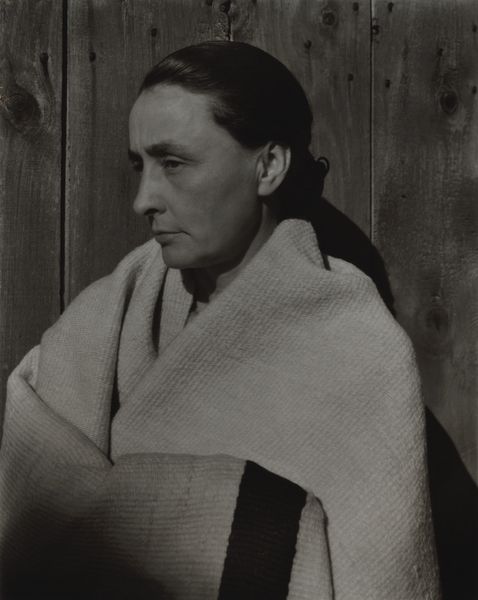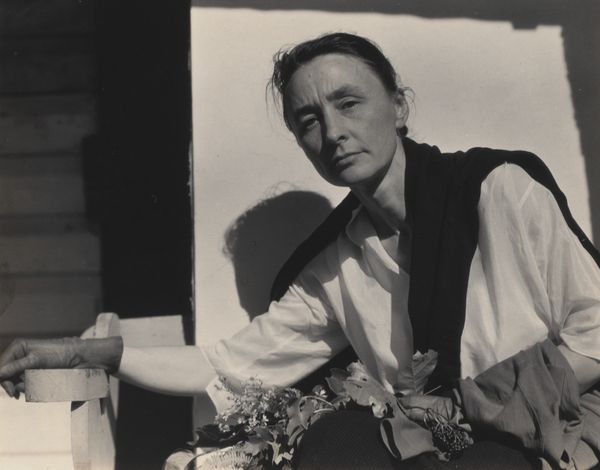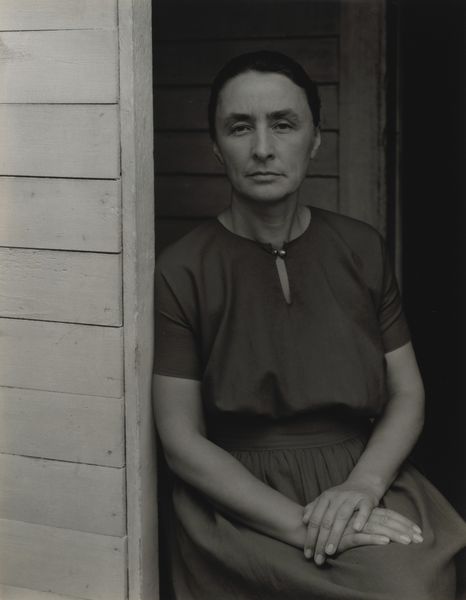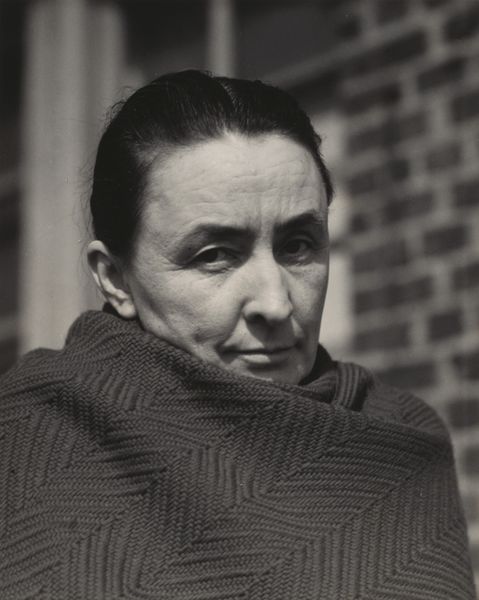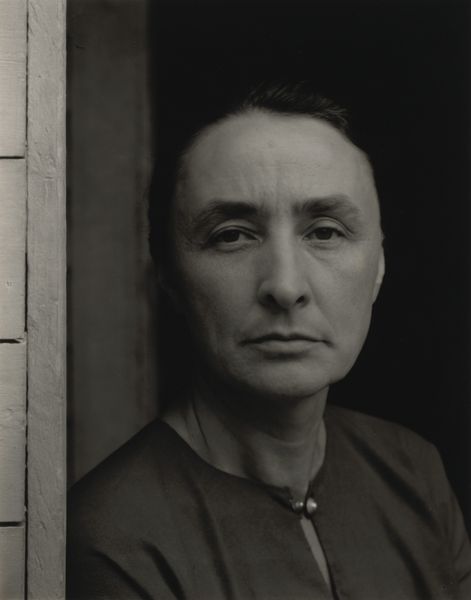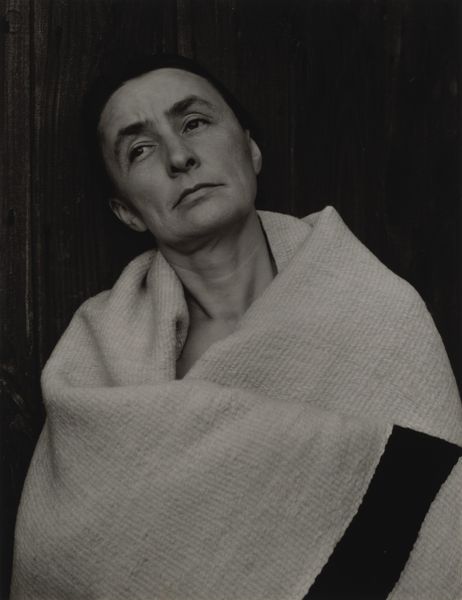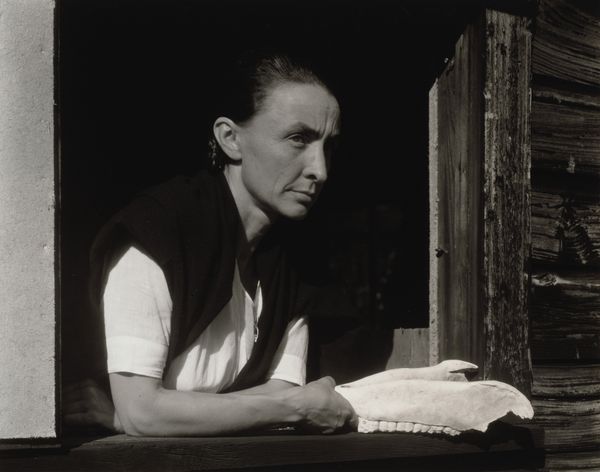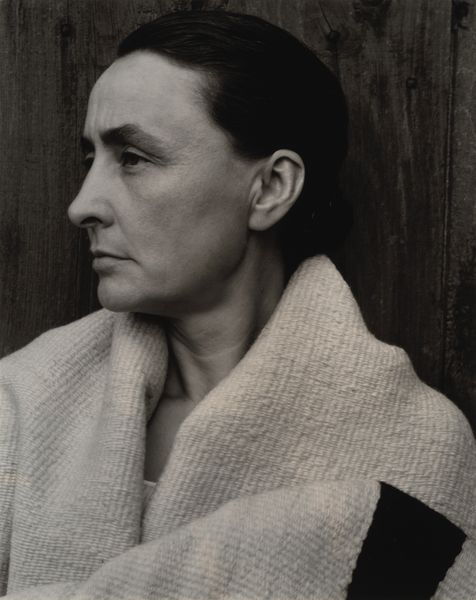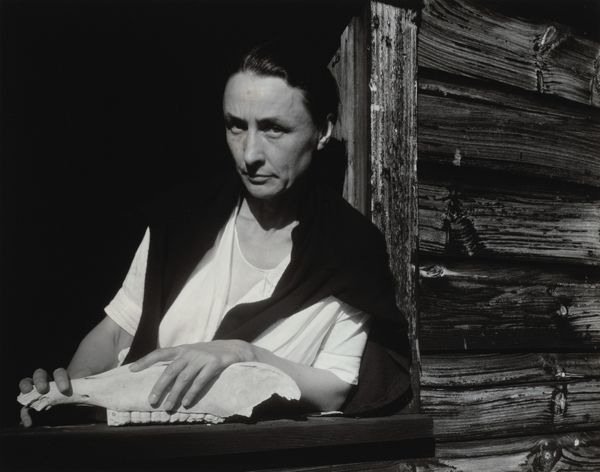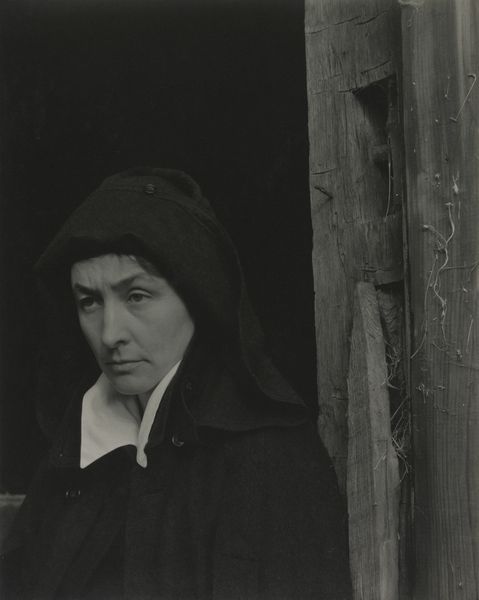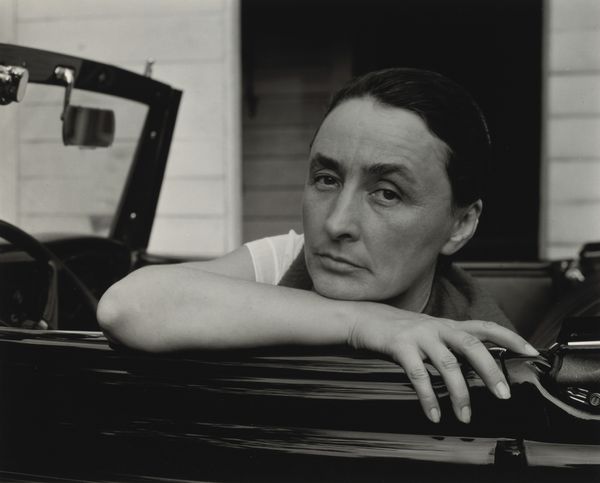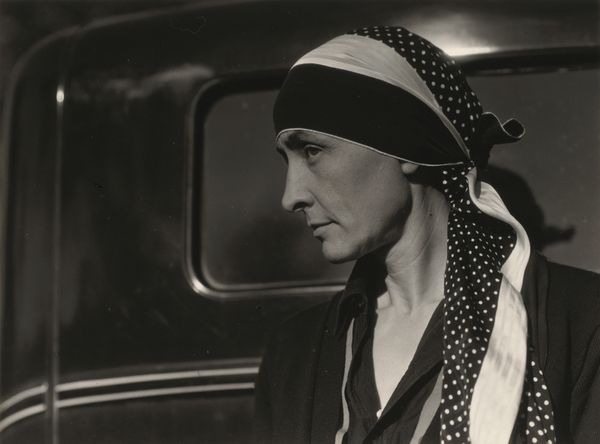
Dimensions: sheet (trimmed to image): 23.8 x 18.6 cm (9 3/8 x 7 5/16 in.)
Copyright: National Gallery of Art: CC0 1.0
Curator: Alfred Stieglitz took this portrait of Georgia O’Keeffe in 1931. It’s a gelatin-silver print, typical of his style, really. Editor: She looks incredibly stoic, almost severe. The light is stark, highlighting the sharp angles of her face. And that blanket she’s wrapped in—it's a very grounding visual element. Curator: Well, consider their relationship at the time. They were married, but it was also a dynamic between artist and muse, with a considerable power imbalance. Stieglitz heavily promoted O'Keeffe, shaping her public persona. Editor: Yes, and that blanket has a certain iconic quality to it. The single dark stripe visually divides the form but also reminds me of ceremonial robes. Is there a sense of shielding or a ritual being implied? Curator: Perhaps, but think about Stieglitz’s larger project. He aimed to elevate photography to the level of fine art. These portraits of O'Keeffe weren't simply personal; they were statements about photography's artistic potential within the Modernist movement. They challenged established art hierarchies, especially at his gallery "An American Place". Editor: And her expression--it almost rejects objectification. Even though Stieglitz arguably created her fame through his depictions, there is an element in her eyes of internal autonomy and resolve that feels stronger than the role he assigned her. Curator: Exactly. The setting too—the plain wooden planks—contrasts O’Keeffe's sophistication, drawing our attention to her perceived essence as an American artist. There is something fundamentally American about that barn door and the raw simplicity and almost rural presentation. Editor: It brings forth her roots as an artist coming to New York by way of the Midwest; in other words, those are rural roots being displayed even as she became this urban icon of modernity. Curator: Ultimately, this photograph captures a crucial moment in American art history: the making of a female artist, the evolution of modernism and Stieglitz’s legacy. Editor: A face in time that looks steadfast. It reminds us that images, whether controlled or accidental, contain worlds within them if we stop to consider it carefully.
Comments
No comments
Be the first to comment and join the conversation on the ultimate creative platform.
